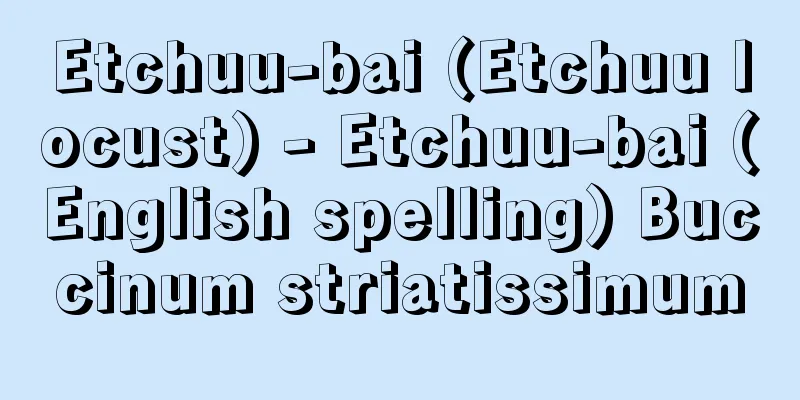Takaba

|
A place set up by a certain person of power for the purpose of falconry. In ancient times it was called Kinya or Shimeno, during the Sengoku period it was called Takano, and under the Toyotomi and Tokugawa governments it was called Takaba. During the Edo period, only the Shogun and daimyo were allowed to have falconry grounds; the Emperor and nobles practiced falconry but did not have their own grounds. In the early modern period, falconry grounds were broadly divided into official falconry grounds and feudal lord falconry grounds, and official falconry grounds included the Shogunate's falconry grounds, the Onshitakaba bestowed by the Shogunate to daimyo including the Gosanke family, and the Okashiba bestowed by the Shogunate to the Gosanke family. The Edo Shogunate's falconry grounds were originally located in the Kanto region, Kinai and around the Tokaido, but by the Kyoho period (1716-1736), they were almost exclusively in the Kanto region, and were organized into Okobushiba and Otorikaiba, among which were the falconry grounds of the Gosanke, bestowed by the Shogunate. They were abolished in 1867 (Keio 3). Okobushiba was a falconry ground within about 5 ri from Nihonbashi, where the Shogun practiced falconry, and was under the control of the Torimi, while Otorikaiba was a falconry ground outside of Okobushiba, where falconers trained their falcons, and was under the control of the head falconer. When a village was designated as a falconry ground, it was placed under the Falconry Law, and was subject to strict control by the Torimi and the head falconer's officers, and was forced to bear the various burdens associated with the maintenance and management of the falconry ground. [Mitsuo Nezaki] "How to Read and Research Historical Documents on Falconry Grounds" by Murakami Sunao and Nezaki Mitsuo (1985, Yuzankaku Publishing) " "The Shogun's Falconry" by Nezaki Mitsuo (1999, Doseisha) " "A Study of the Edo Shogunate Falconry System" by Nezaki Mitsuo (2008, Yoshikawa Kobunkan) Source: Shogakukan Encyclopedia Nipponica About Encyclopedia Nipponica Information | Legend |
|
特定の権力者が、鷹狩を目的として設定した場所。古代には禁野(きんや)、標野(しめの)、戦国時代には鷹野(たかの)、豊臣・徳川政権下では鷹場という。江戸時代に鷹場をもちえたのは将軍と大名だけであり、天皇や公家は鷹狩を行使しても鷹場をもたなかった。近世の鷹場には、大別して公儀鷹場と藩鷹場とがあり、公儀鷹場には幕府鷹場や幕府が御三家をはじめとする大名に下賜した恩賜鷹場(おんしたかば)、幕府が御三卿に下賜した御借場(おかしば)などの種類がある。江戸幕府の鷹場は当初、関東のほか、畿内や東海道周辺にも存在したが、享保期(1716~1736)にはほぼ関東だけとなって、御拳場(おこぶしば)・御捉飼場(おとりかいば)に編成され、その間に幕府から下賜された御三家の鷹場が配置された。1867年(慶応3)廃止。御拳場は日本橋よりおよそ5里以内で、将軍が鷹狩を行使する鷹場をいい、鳥見(とりみ)の支配下にあり、御捉飼場は御拳場の外側にあって、鷹匠(たかじょう)らが鷹を訓練する鷹場をいい、鷹匠頭の支配下にあった。鷹場に指定されると、その村々は鷹場法度(はっと)の下に置かれて、鳥見や鷹匠頭配下の野廻りによるきびしい支配を受け、鷹場の維持管理にともなう諸負担を強制された。 [根崎光男] 『村上直・根崎光男著『鷹場史料の読み方・調べ方』(1985・雄山閣出版)』▽『根崎光男著『将軍の鷹狩り』(1999・同成社)』▽『根崎光男著『江戸幕府放鷹制度の研究』(2008・吉川弘文館)』 出典 小学館 日本大百科全書(ニッポニカ)日本大百科全書(ニッポニカ)について 情報 | 凡例 |
<<: Takahagi [city] - Takahagi
>>: Takanoyu [Hot spring] - Takanoyu
Recommend
Mangifera odorata (English spelling)
… [Kishimoto Osamu]. … *Some of the terminology t...
Hanaoka Seishu
Year of death: Tenpo 6.10.2 (1835.11.21) Year of b...
Space food - Uchuu-shoku (English spelling) space food
Food to be brought on space travel. Due to the spe...
Mr. Nikaido
The family branched off from the Kudo clan, desce...
《Cosmology》 - Spaceman
…German mathematician and assomologist. His real ...
Adultery - Kantsuzai
This refers to cases where a husband or wife havi...
Libra - Balance
A scale for precise measurement of mass. Usually, ...
Globorotalia menardii (English spelling) Globorotalia menardii
…[Yoichi Takayanagi] [Minoru Imajima]. … *Some of...
star fruit
…The fruit is about 10 cm long, yellow-green, and...
Air space
…From here onwards, the bronchi are divided into ...
Itakkeshikidoki - Pottery with a plate
...They are decorated with patterns drawn with li...
Deviation from roundness
Circularity is the amount of deviation of a circul...
Magoshi Kyohei
Businessman. Born in Kinoko Village, Bitchu Provi...
Meganthropus - Megantropus (English spelling)
This fossil human was excavated from Sangiran in ...
Buke Tensou - Buke Tensou
〘Noun〙 (also "Buke Densou") A title of o...









